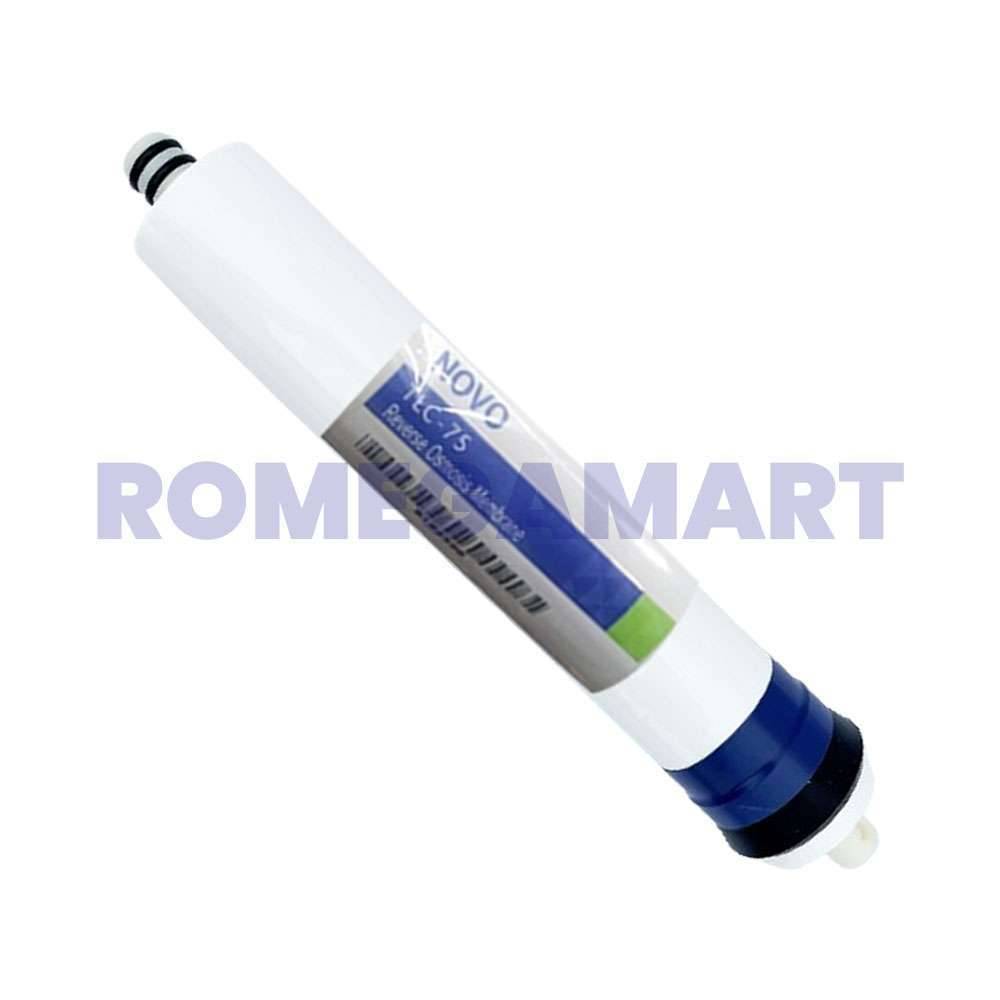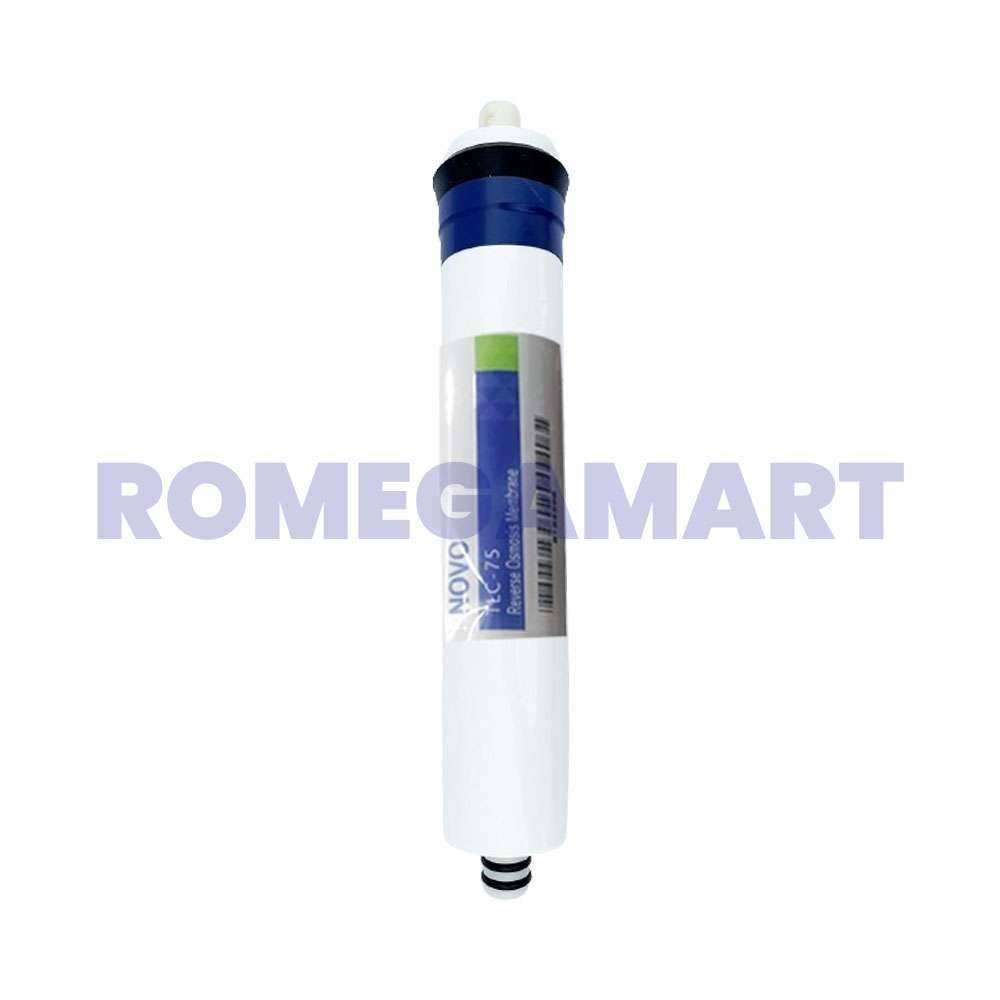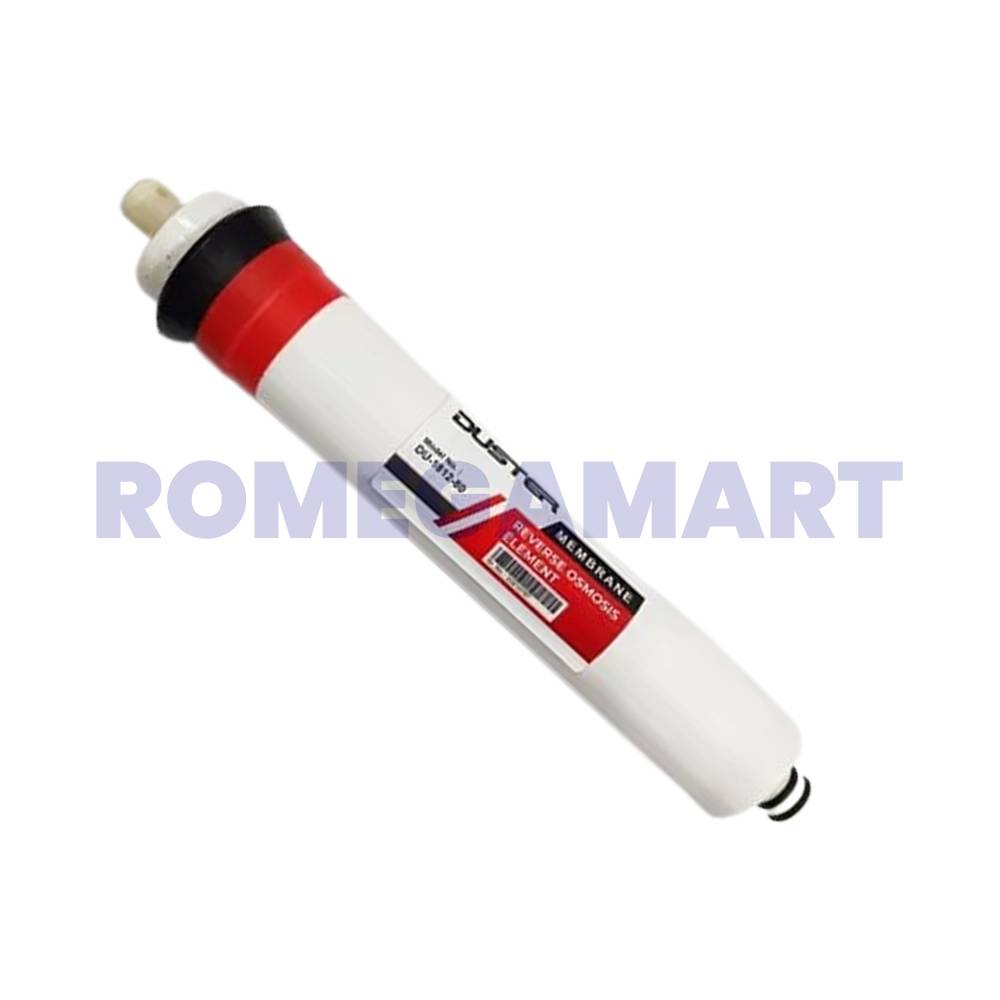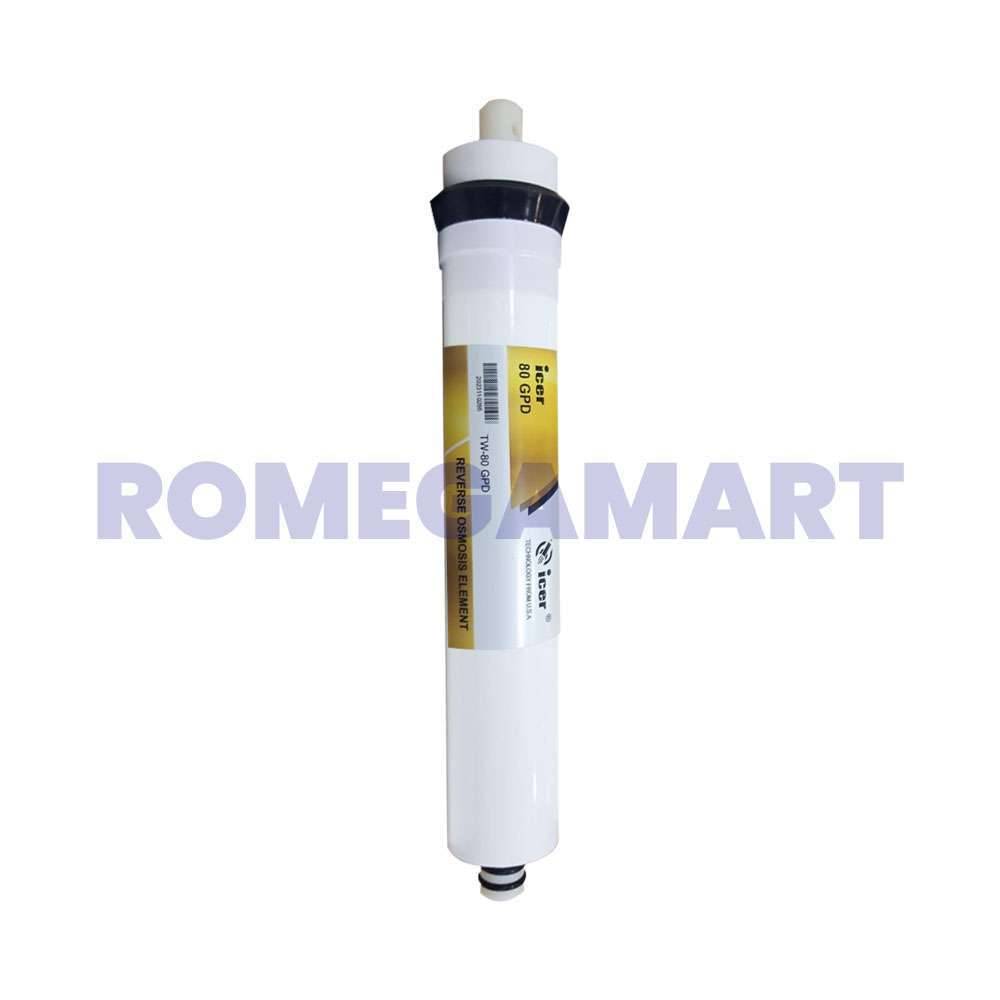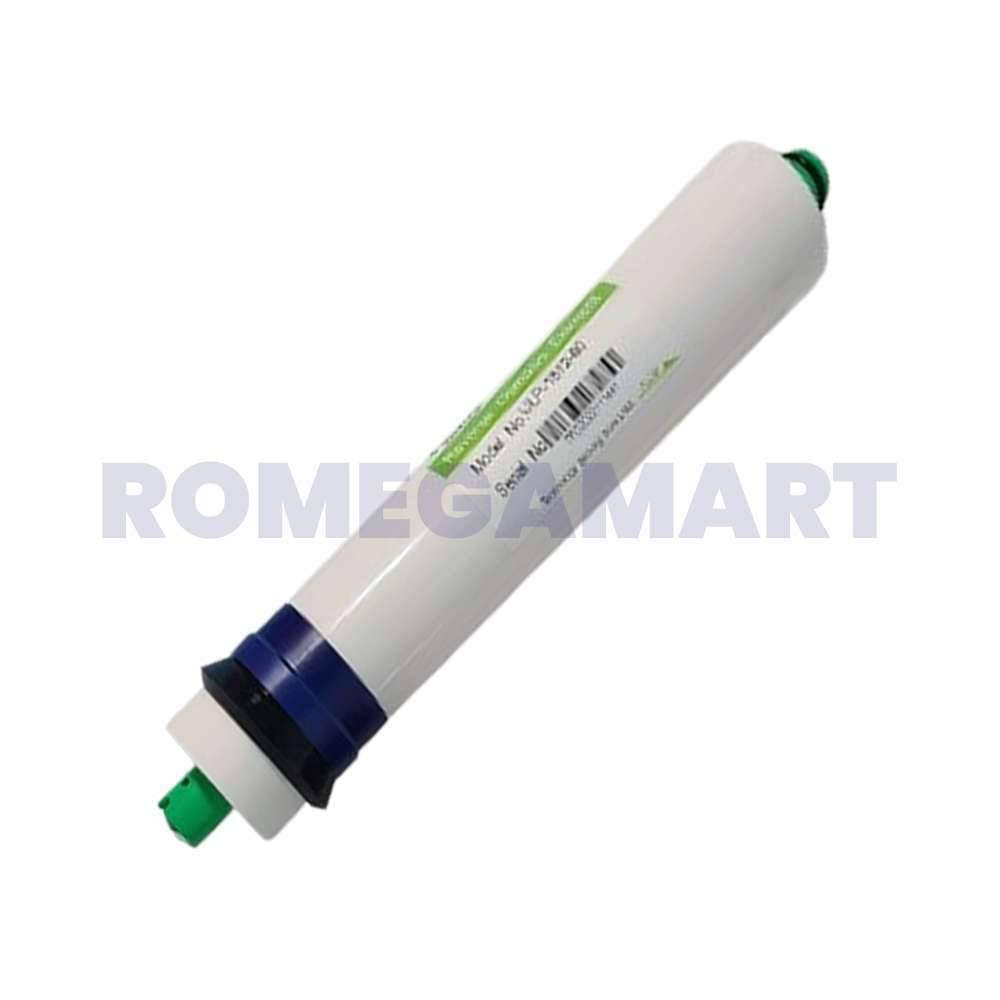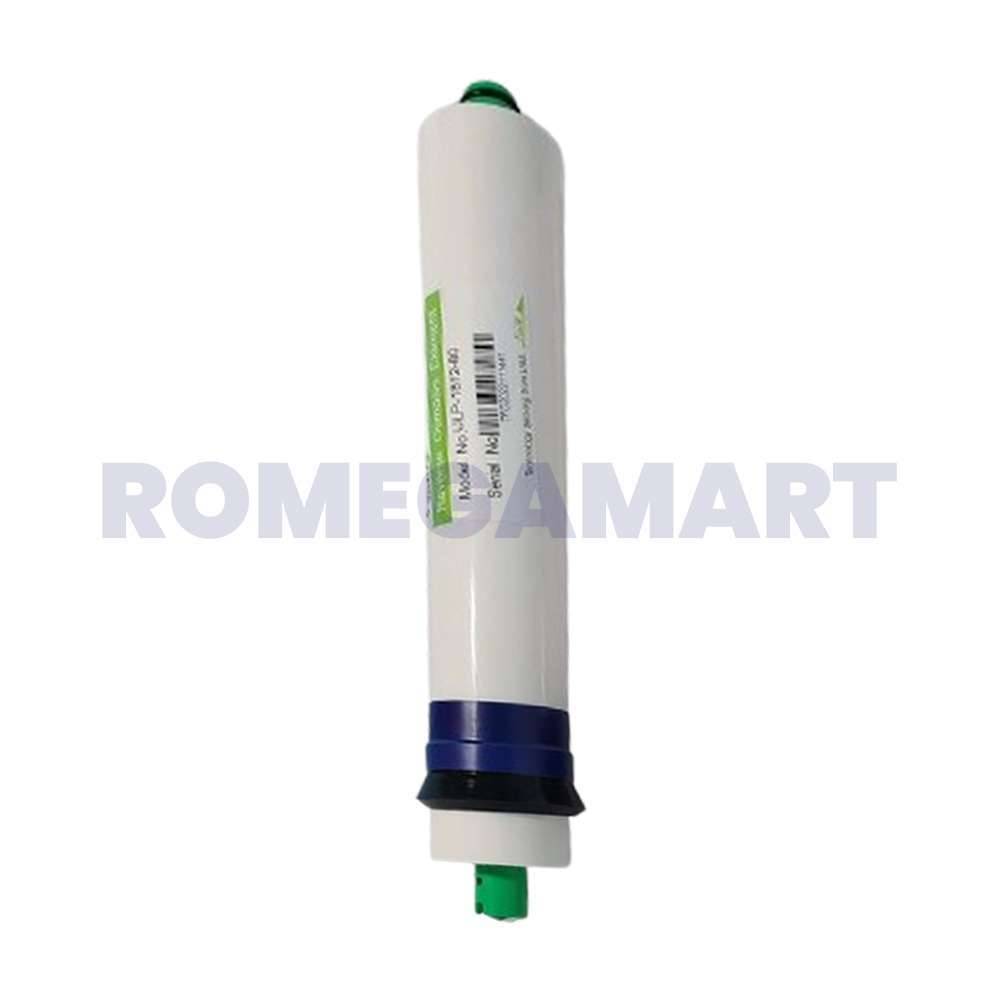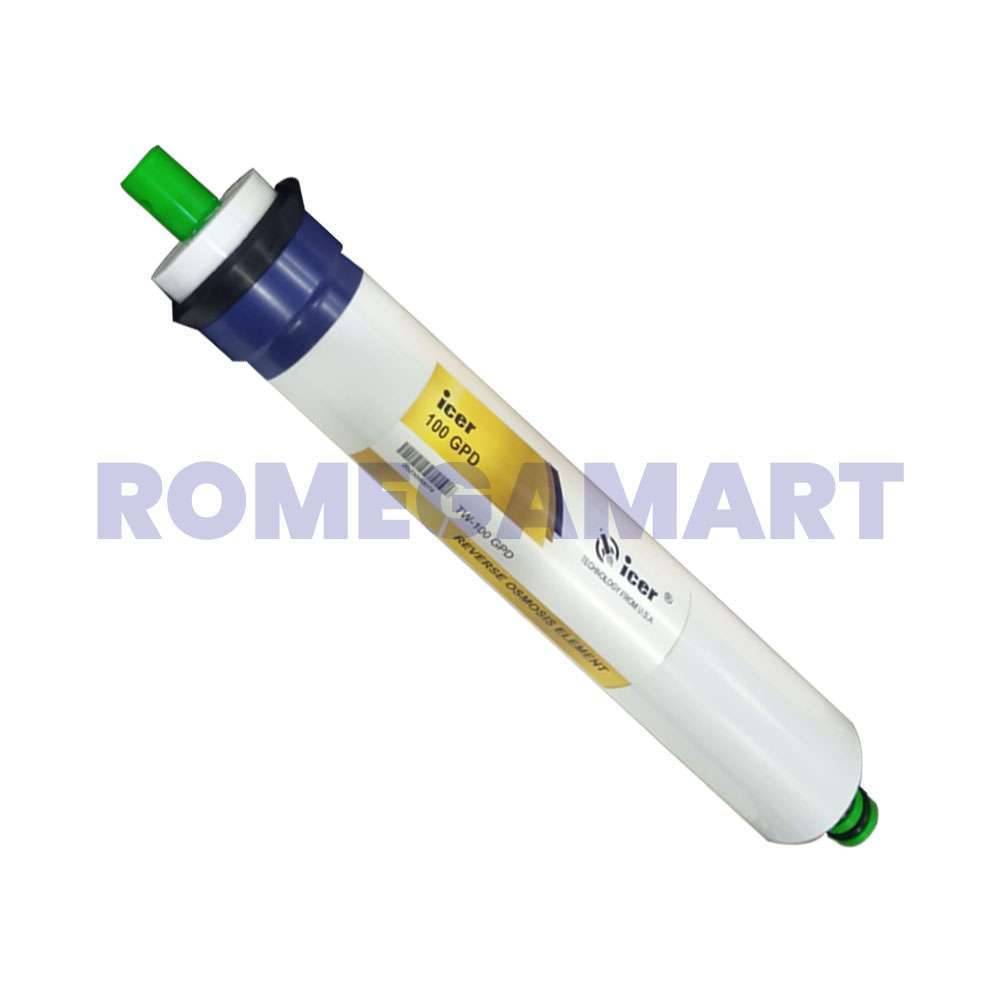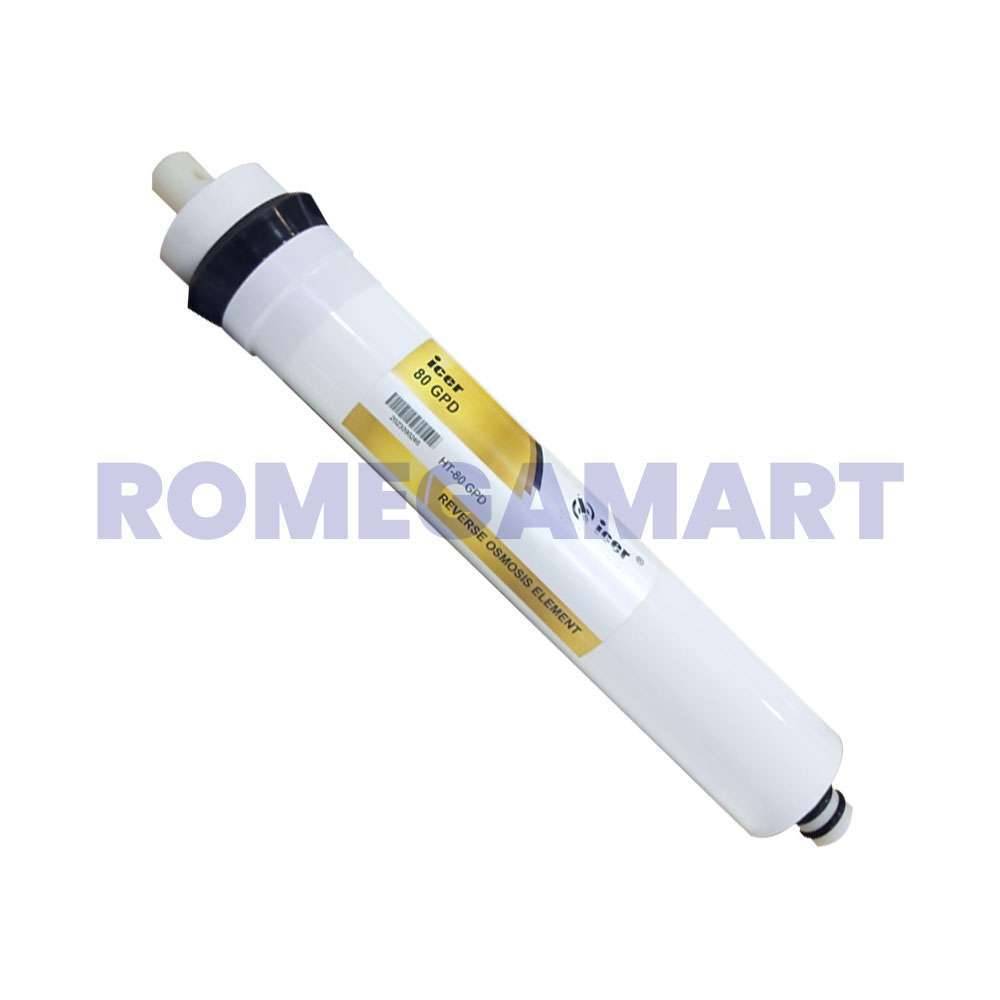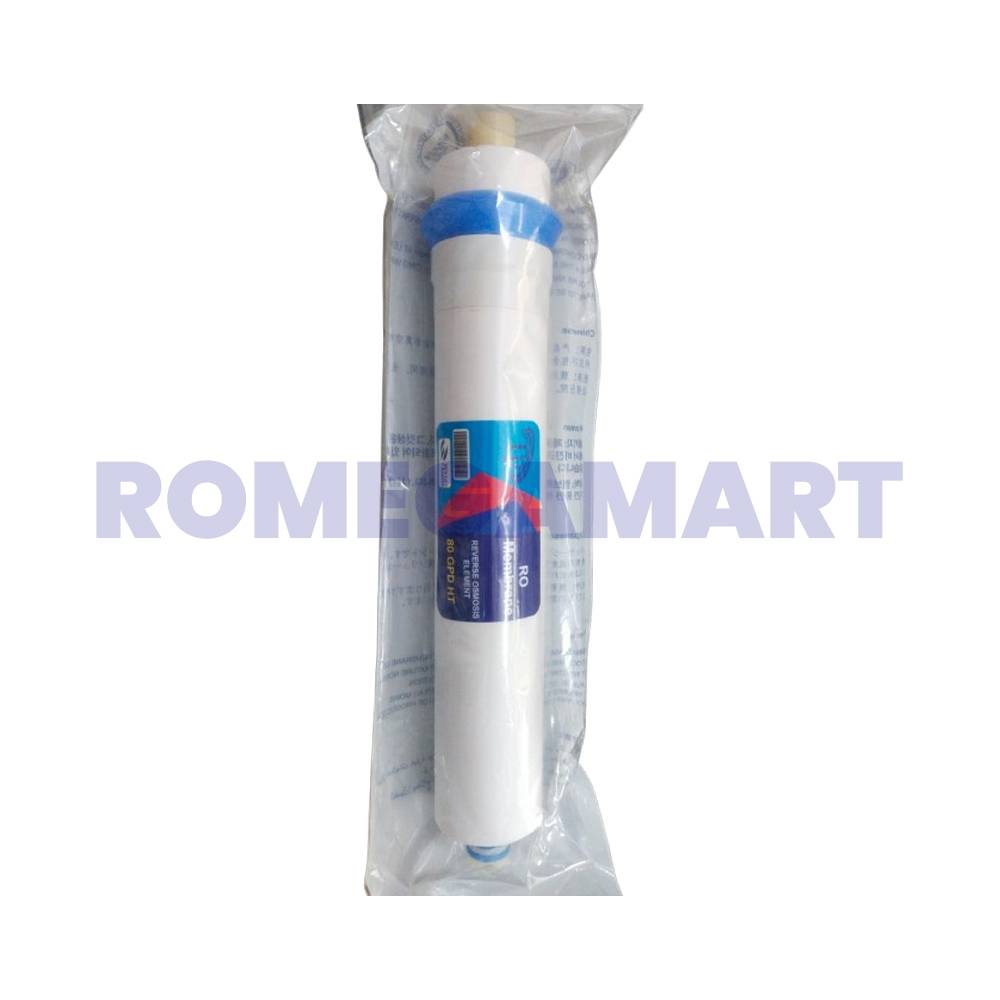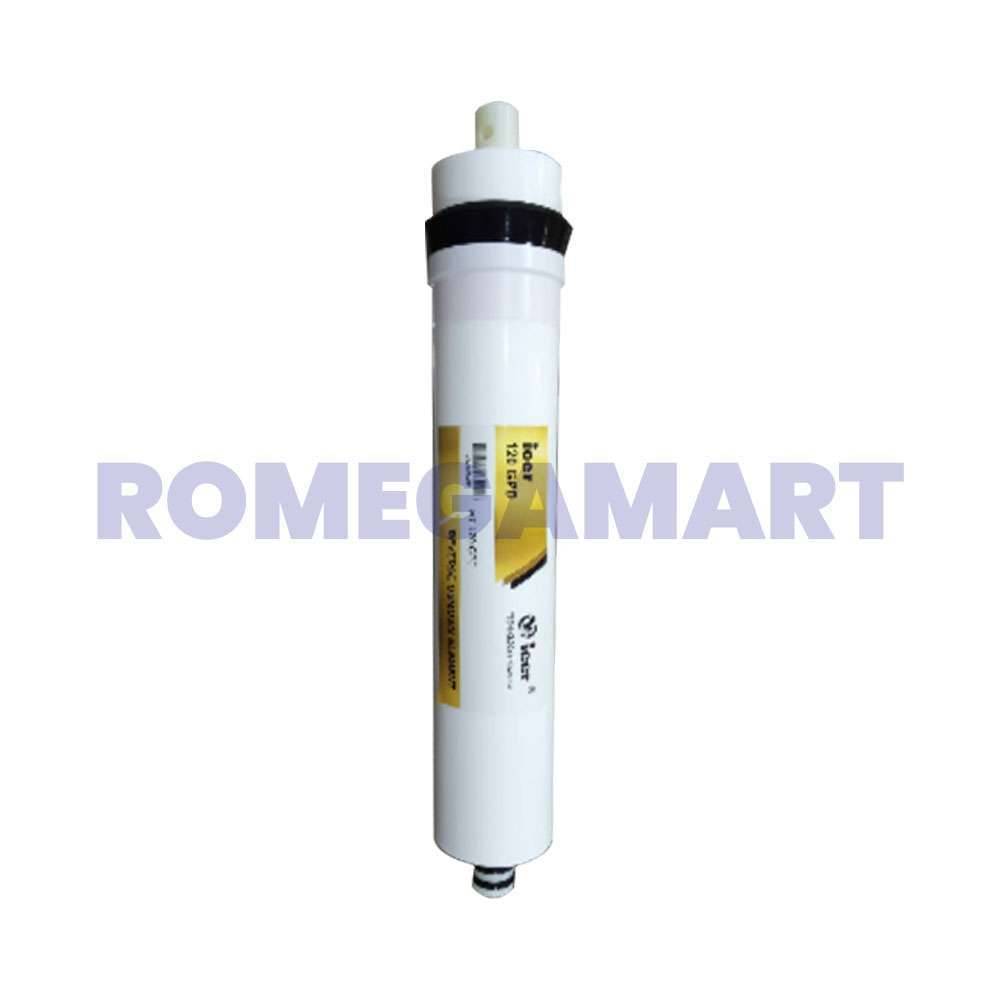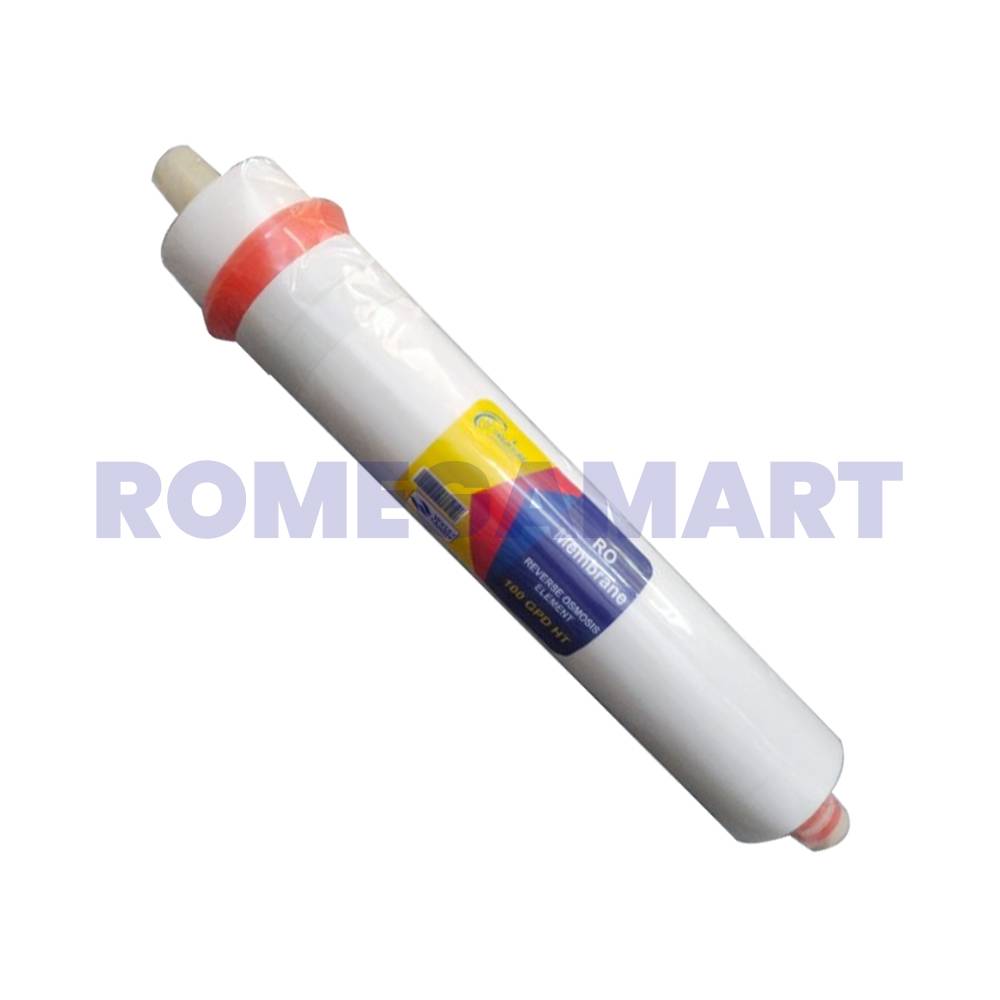An RO membrane is the heart of every water purifier system. It ensures the removal of harmful contaminants, dissolved salts, and unwanted particles from water to provide clean, safe, and great-tasting drinking water. Whether you’re looking for a domestic purifier or an industrial setup, choosing the right RO membrane filter is essential for performance and purity.
What Is an RO Membrane?
An RO membrane (Reverse Osmosis membrane) is a semi-permeable thin film layer that filters water at a molecular level. It removes up to 99% of impurities like bacteria, fluoride, chlorine, and dissolved solids, making water healthy and safe.
Key Highlights:
-
Filters even the smallest dissolved salts and impurities effectively.
-
Works with both domestic and commercial RO systems.
-
Durable, long-lasting, and compatible with standard RO housings.
-
Ensures pure, mineral-balanced, and odour-free drinking water.
-
Maintains efficient flow and high water recovery rate.
Types of RO Membranes
Different types of membranes serve different capacities, from household use to large-scale industrial systems.
Main Variants:
-
Domestic RO Membrane: Ideal for home water purifiers with 50–100 GPD flow rate.
-
Commercial RO Membrane: Suitable for offices, schools, and shops with moderate demand.
-
Industrial RO Membrane: Used for high-capacity systems like 1000 LPH or above.
-
Vontron 4040 Membrane: A popular model for 1000-liter and commercial-grade purifiers.
-
Membrane Filter Cartridge: Acts as an additional layer of filtration before the main RO stage.
Membrane Vontron 4040 – Industrial-Grade Filtration Power
The Vontron 4040 RO membrane is a leading choice for commercial and semi-industrial RO systems. It delivers superior performance and a high recovery rate while maintaining consistent purity.
Key Features:
-
Designed for systems with up to 1000 LPH capacity.
-
Provides excellent salt rejection for ultra-pure water.
-
Works efficiently under variable pressure and temperature.
-
Long operational life with minimal maintenance needs.
-
Ideal for industries, institutions, and commercial establishments.
RO Membrane Price Overview
The RO membrane price depends on its capacity, brand, and water output. Domestic membranes are usually affordable, while industrial membranes like 4040 and 8040 models are priced higher due to capacity and performance.
Price Factors:
-
Capacity (in GPD or LPH) significantly influences cost.
-
Material quality and filtration efficiency affect pricing.
-
Imported membranes are priced higher for premium performance.
-
Long-life membranes offer better value despite higher initial cost.
-
Prices vary depending on the quantity and application type.
1000 Liter RO Membrane Price
For commercial systems, the 1000-liter RO membrane is an essential component that ensures high-volume purification with consistent quality.
Specifications and Features:
-
Suitable for systems handling 1000 liters per hour or more.
-
Delivers stable output under continuous operation.
-
Built with spiral-wound polyamide thin-film composite technology.
-
Offers high rejection rates for TDS, hardness, and chemicals.
-
Designed to operate under varying input water conditions.
Membrane Water Filter – The Core of Clean Water
The membrane water filter is responsible for fine filtration, removing even microscopic contaminants that normal filters can’t catch. It is the backbone of every multi-stage purification process.
Benefits:
-
Filters impurities up to 0.0001 microns in size.
-
Removes chlorine, lead, arsenic, and other heavy metals.
-
Enhances taste and odor by eliminating organic compounds.
-
Maintains stable water pressure for consistent output.
-
Works with both residential and commercial filtration units.
How an RO Membrane Works
The RO process uses pressure to push water through the semi-permeable membrane, separating pure water (permeate) from rejected impurities (brine).
Process Steps:
-
Raw water is first pre-filtered through sediment and carbon filters.
-
Pressurized water passes through the RO membrane layer.
-
Dissolved solids and contaminants are rejected and flushed out.
-
Purified water is stored in a clean tank for household use.
-
The system maintains a balance between purity and mineral retention.
When to Replace an RO Membrane
Timely membrane replacement ensures continued purity and water flow quality.
Replacement Signs:
-
Noticeable drop in water output or flow rate.
-
Unusual taste or odor in purified water.
-
High TDS or conductivity reading in output water.
-
Visible scaling or fouling on the membrane surface.
-
Water taking longer to fill the purifier storage tank.
How to Choose the Right RO Membrane
Selecting the correct membrane ensures maximum purification efficiency and longevity.
Buying Guide:
-
Match the membrane capacity with your system’s LPH or GPD rating.
-
Choose based on feed water TDS and pressure requirements.
-
Consider long-life, low-fouling membranes for hard water conditions.
-
Look for NSF-certified or ISO-approved filtration quality.
-
Always pair it with proper pre-filtration stages for better results.
Advantages of Using Quality RO Membranes
A premium-grade membrane guarantees efficient, long-term performance and consistent purity.
Advantages:
-
Removes up to 99% of total dissolved solids and bacteria.
-
Increases water purifier efficiency and lifespan.
-
Provides constant TDS control and better taste balance.
-
Reduces electricity and water wastage in high-efficiency models.
-
Works reliably across varying input water pressures.
Maintenance Tips for Longer Life
Proper care ensures the membrane delivers stable performance for years.
Maintenance Guidelines:
-
Replace sediment and carbon pre-filters regularly.
-
Flush the membrane periodically to prevent scaling.
-
Maintain recommended input pressure for best results.
-
Use only clean, filtered feed water for longer lifespan.
-
Store spare membranes in dry, hygienic conditions.
Applications of RO Membranes
RO membranes are used widely across multiple sectors, from homes to industries.
Applications:
-
Domestic RO water purifiers and kitchen systems.
-
Commercial buildings, offices, and institutions.
-
Industrial water treatment and bottling plants.
-
Food processing and laboratory-grade water setups.
-
Hospitals and clinics for sterilized water supply.
Performance Factors That Affect RO Membranes
Membrane performance depends on environmental and operational conditions.
Important Factors:
-
Water pressure and feed flow rate during filtration.
-
Level of pre-treatment and TDS concentration.
-
Temperature of incoming water supply.
-
Frequency of system cleaning and backwashing.
-
Quality of housing and seal integrity during operation.
Eco-Friendly and Safe Filtration
Modern membranes are designed to be energy-efficient and environmentally friendly.
Eco Benefits:
-
Reduces water waste with improved recovery rates.
-
Made from non-toxic, safe polymer materials.
-
Lower energy consumption during purification.
-
Long operational life minimizes replacement waste.
-
Suitable for sustainable, low-impact water treatment systems.
Frequently Asked Questions (FAQ)
1. What is the price range of an RO membrane?
The price varies from affordable domestic membranes to higher-cost industrial models, depending on size and capacity.
2. What is the Vontron 4040 membrane used for?
It’s ideal for commercial and 1000-liter RO systems, offering high recovery and excellent salt rejection.
3. How long does an RO membrane last?
Typically, 1–2 years for domestic units and up to 3 years for industrial systems, depending on water quality.
4. Can I clean my RO membrane at home?
Yes, with professional-grade cleaning agents, but replacement is recommended once performance drops significantly.
5. What factors affect the RO membrane price?
Capacity, material quality, performance efficiency, and brand influence the overall cost.
6. How do I know if my RO membrane is faulty?
Low flow rate, salty taste, or high TDS in output water indicate replacement needs.
7. What is a membrane filter?
It’s a thin filtration layer that separates impurities from pure water under pressure.
8. What is the lifespan of a 1000-liter RO membrane?
Typically between 2–3 years under regular use and proper maintenance.
9. Are all membranes compatible with domestic purifiers?
No, you must match the GPD rating and system type before purchase.
10. Is the membrane water filter safe?
Yes, all quality RO membranes are made from food-grade materials and safe for drinking water.
Conclusion
A reliable RO membrane filter ensures the consistent delivery of safe, pure, and mineral-balanced water. Whether for domestic or industrial applications, selecting the right membrane water filter guarantees optimal performance and longevity.
From the efficient membrane Vontron 4040 for 1000-liter systems to cost-effective domestic membranes, every model plays a crucial role in the purification process. Understanding the RO membrane price, capacity, and compatibility will help you choose the best option for your system — ensuring clean water, healthier living, and long-term satisfaction.


